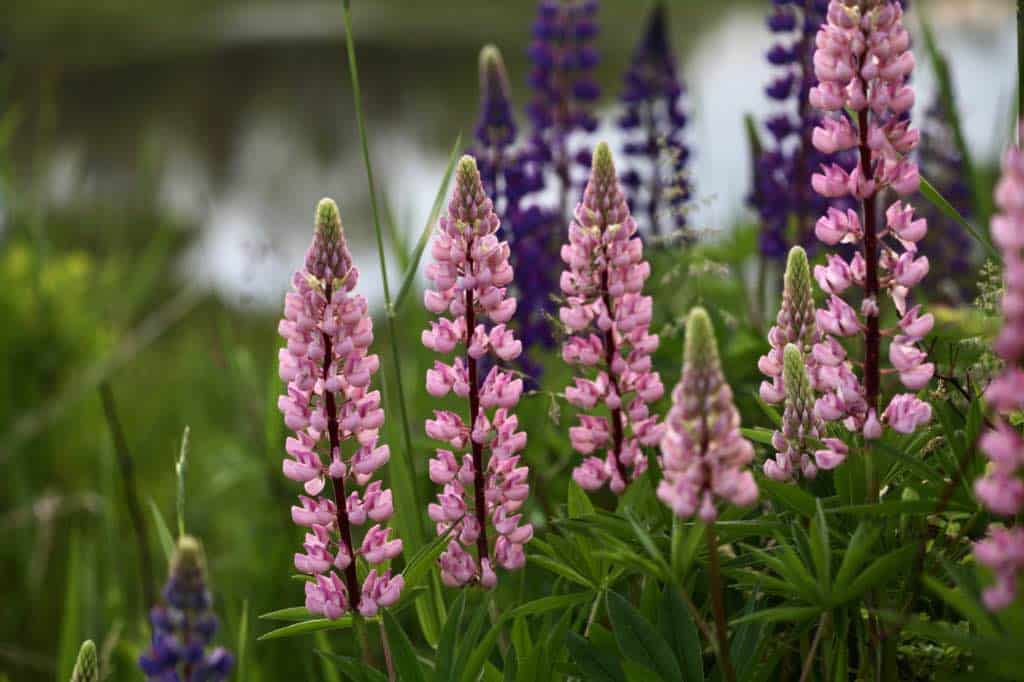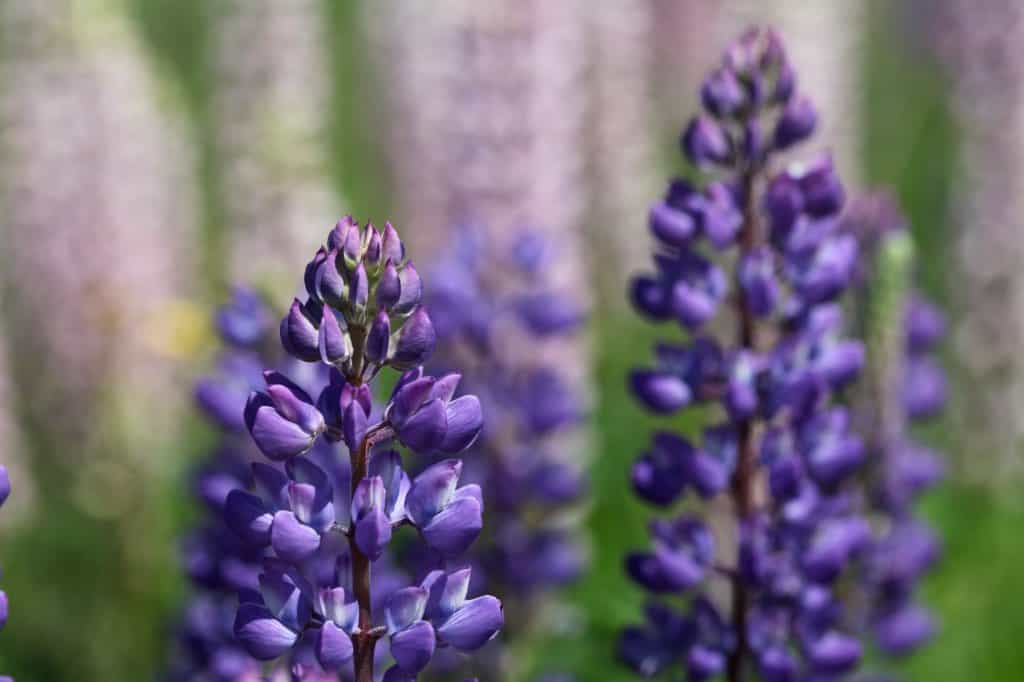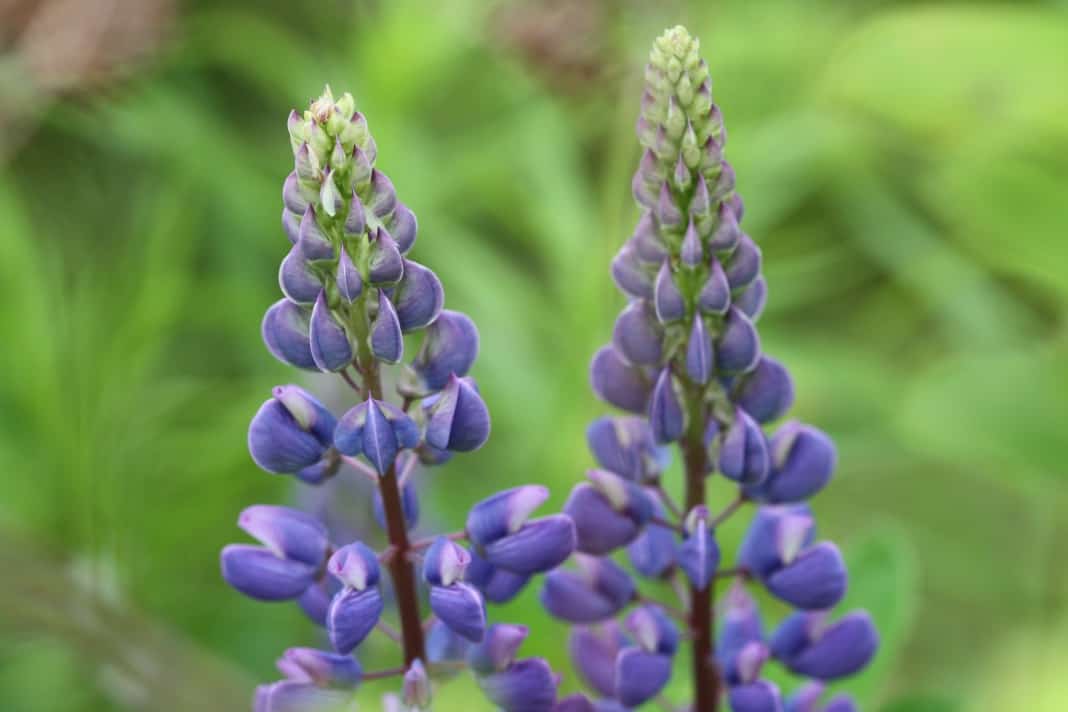Lupines are colorful spiked flowering plants which are easy to grow, even for the beginner gardener. When planning to plant these flowers in your garden, you may be wondering if lupines are perennials. The plants are proficient self seeders, which explains lots of new seedlings in the spring, but are these plants perennials as well?

Are Lupines Perennials?
There are many different species of lupines, including both annual and perennial varieties. Most lupine cultivars grown in our gardens are perennial plants.
Even with the perennial varieties of lupines, lifespan and hardiness is based on a number of different factors. Considerations such as climate, soil conditions, and general plant care can make a difference in a plant's lifespan.
While many perennials can live on for many years, some of the more tender lupine varieties may act more like biennials, or short-lived perennials, surviving only for several years.

What Is A Perennial?
A perennial plant is one that will return to the garden after planting, for more than two years. The lifespan of a perennial is generally much longer than that of an annual or biennial plant.
There are a number of different types of perennials, including herbaceous perennials, woody perennials, and evergreen perennials.
Perennial lupines are considered to be herbaceous perennial plants.

Lupines: A Closer Look At The Plants
Lupines (Genus Lupinus) are popular plants both in the garden, and in the wild, for their absolutely stunning spiked flowers.
The wild perennial lupine often graces us with it's presence at the beginning of the growing season, with drifts of colorful blooms along highways and in open fields.
A member of the pea family, the spiked blooms are filled with smaller pea-like flowers. This perennial flower makes a good cut flower when in season, offering spikes of colored blooms to give balance to flower arrangements.
The plants are also appreciated for their ability to improve soil fertility, by fixing nitrogen, due to their long tap roots.
The long roots of lupines discourage use as container-grown plants, unless the plant pot has enough depth to accommodate the deep root system.
If you plan on planting and growing lupines in your garden, make sure to do research on the cultivars that are best suited for your climate.
Most perennial varieties are cold hardy and do well in cooler climates. The more tender varieties are often best suited for warmer climates.

Perennial Lupine Varieties
Many lupine varieties are perennials.
Some of the popular varieties of perennial lupines spp include:
1. Lupinus perennis (Wild Lupine)
- Also known as wild lupine, Lupinus perennis is a wild flower found in parts of the United States and Canada. The blooms of wild lupines are sparsely flowered, and these perennials are most often found in a blue or purple flower color.
- This lupine plant is a host plant for the rare and endangered Karner blue butterfly, as well as for other butterfly and moth species.
2. Lupinus polyphyllus ( Garden Lupine)
- The garden lupine, or Lupinus polyphyllus, is one of the most common types of perennial lupines growing wild in our zone 5 Nova Scotian climate.
- The plant is also a favorite lupine for the garden, with bright flower spikes in purples and blues.
- Garden lupines are popular plants for cottage gardens and wildflower gardens.

3. Lupinus x russellii (Russell Hybrids)
- Russel hybrids are popular hybrid lupines.
- These plants were hybridized by the horticulturist George Russell, from various lupine species, including Lupinus polyphyllus and Lupinus arboreus.
- The plants are fuller, with denser flower spikes than some of the original wildflower species plants, making them great ornamental plants.
4. Lupinus arboreus ( Yellow Bush Lupine)
- The Yellow bush lupine, or Lupinus arboreus is actually an evergreen shrub, with yellow lupine flowers.
- The shrub can grow to 7 feet in height, and is indigenous to California, United States. This lupine species is a popular ornamental plant.
5. Lupinus nootkatensis (Nootka Lupine)
- The Nootka lupine is also a variety of perennial lupine known to grow in Nova Scotia. The plant is native to North America, and is common along the west coast.
- The colorful blooms make it a great garden plant.

Annual Lupine Varieties
Some lupine cultivars are also annual plants.
Annual lupines are annual flowering plants which grow from seed to bloom, and then to seed set at the end of life cycle, all within a 12 month period.
The great thing about lupines in general, along with their beauty, is their ability to self seed.
This self seeding ability helps to perpetuate the plants in the garden, year after year. Therefore, even annual lupines can return to the garden in the right location, by self seeding.
Some of the popular species of annual lupines include:
1. Lupinus luteus ( European Yellow Lupine)
- The yellow lupine, or Lupinus luteus, is an annual wildflower native to the Mediterranean region of Southern Europe. The flowers produce spikes of bright yellow blooms.
2. Lupinus angustifolius (Narrow-leafed Blue Lupine)
- Lupinus angustifolius is native to Eurasia and Northern Africa. The plant has been grown since ancient times as a legume, as well as livestock fodder, and even as a green manure.
3. Lupinus mutabilis (Andean Lupine)
- The Andean lupine, or Lupinus mutabilis, is an annual lupine plant grown in the Andes as an edible bean. The flowers are spiked and purple, and the beans are used as a protein source.
4. Lupinus albus (White Lupine)
- The white lupine is an annual flowering lupine plant, native to the Balkans. The plant is commonly cultivated in the Mediterranean for it's ornamental flowers and edible seeds.
5. Lupinus texensis ( Texas Bluebonnet)
- Also known as Texas bluebonnet, Lupinus texensis is the state flower of Texas.
- The plants are hardy annuals, with tall plumes of blue flowers with some white or pink flower parts as well.
Advantages Of Planting Perennial Lupines
Growing perennial lupines in the flower garden certainly has it's advantages. In the garden these perennials are grown as ornamentals, and offer a cottage garden style planting.

Economic Benefits
- The perennial plants return year after year, to grace us with their presence in the garden space, offering a cost effective investment from the original planting.
- Even if they are tender perennials in some climates, although they may not last long, these lupines will often self seed. As a result the plants often remain in the garden, long after the originals were planted or have disappeared.

Aesthetic Benefits
- Perennial lupines will often bloom with more vigor and more flowers, once the plants become larger and more mature, in subsequent years.
- Although the bloom time is limited as compared to annual flowers, perennial lupines still have a fairly long flowering time. They will bloom for approximately 3 to 4 weeks in duration before becoming spent.
Lower Maintenance
- The perennial plants are also fairly low maintenance as compared to their annual counterparts. Germinating the seeds and planting them into the garden is a one time effort, with many years of blooming as a result.
- This is unlike annuals, which need to be replanted every year, and sometimes even more often than that, with succession planting.
- The perennial lupine plants are also fairly drought resistant once they are established, after their first year, due to their long tap root. This makes them a low maintenance option as far as watering is concerned.

Environmental Benefits
- The long taproots of lupine plants offer environmental benefits to the garden.
- Lupines have soil-enriching properties, since the plants can fix nitrogen in the soil. In fact, sometimes lupines are planted as a nitrogen fixer cover crop, just for that purpose.
- The root systems of perennials in general are often more extensive than those of annual plants. This is true for perennial lupines as well.
- This extensive root system can help prevent soil erosion, which is an added benefit.
- Attraction to pollinators like bees and butterflies is another environmental benefit.
- The bees are especially fun to watch as they dance around the lupine flowers. Bees have developed a special strategy for accessing the lupine nectar, which in turn helps with the pollination of the lupine blooms.

Tips For Growing And Caring For Perennial Lupines
Perennial lupines are low maintenance plants.
For best blooming and plant health, here are some considerations for optimal perennial lupine care.
Best Planting Zones And Climates
- Perennial lupines grow well in usda plant hardiness zones 4 to 8.
- Many perennial lupines prefer cool temperatures, and do best in climates with cool summers.
Soil Requirements
- Lupines do well in average soil. It's also important to grow them in a well-drained soil.
- The plants will even grow in in areas that would be considered low fertility, such as on hillsides and along roadside locations in gravel.
- Plants will not do as well in a waterlogged location however, so ensure good drainage, especially in denser clay soils.
- It is important to have good drainage in the location where the lupines grow, as the plants are vulnerable to root rot in poorly drained areas.

Sunlight And Watering Preferences
- Lupines prefer a full sun location for best blooming potential.
- These perennials will grow in a partial shade location, however in shade the lupines are more vulnerable to develop powdery mildew.
- In hot climates the plants will benefit from some afternoon shade.
- For water requirements, water young plants in well, when they are first planted in the garden. Once the plants become established, they become quite drought tolerant.

Common Pest And Disease Management
- Common pests that are attracted to perennial lupines include slugs and snails, as well as aphids.
- Remove slugs and snails manually. For aphids, the infected plants can be treated organically with insecticidal soap.
- Lupines are also vulnerable to fungal disease such as powdery mildew, when grown in areas where there is more moisture and humidity.
- This condition can often be prevented, by planting in full sunlight locations, and by providing good spacing between plants.
- Powdery mildew can be treated organically using a number of methods, including DIY concoctions for eliminating powdery mildew, as well as store bought options.
Pruning And Winter Care
- Pruning is not necessary for lupines, however it can clean up the appearance of the plant after blooming.
- Prune the spent flower stalks where lupine seed pods are developing, to conserve energy for the plants. The pruning process will tidy the plants, and will also help to prevent self seeding, if that is an issue for the gardener.
- There is no specific winter care for perennial lupines, as these herbaceous perennial plants will disappear completely, as they become dormant.
- A light layer of mulch covering the base of the plant can provide some insulation during the winter, however make sure to pull away the mulch in spring, as the plant reemerges.

Frequently Asked Questions
Can Lupines Survive Winter?
As hardy perennials, lupines generally survive cold winters in colder climates.
The herbaceous nature of these perennials allows all parts of the lupines to die back to the ground in winter, and no plant parts are exposed above ground during the winter months.
The deep root system will survive the freeze, and new growth will reemerge from the ground in spring.
Do Lupines Bloom All Summer Long?
Lupines bloom for a 3 to 4 week period in late spring and early summer. Once the blooming period is finished, the blooming will most likely be done for the season.
If the spent flowers are pruned from the plant after blooming, there can be another limited flush of blooms in the late summer or early fall.
This is due to the fact that the plant's energy is no longer required for seed formation, and can be diverted back to the plant for a second flush of blooms.
Do Lupines Come Back Every Year?
Perennial lupines will generally last more than 2 years in ideal growing conditions.
The plants also readily self seed, perpetuating the lupine patch for years to come.

Conclusion
Lupines are available in perennial and annual varieties, however the most commonly grown lupines are perennial in nature.
Lupines make an excellent choice for the perennial garden. They are great plants for wildflower gardens, and are wonderful cottage garden plants.
Although often seen as a wildflower, perennial lupines can also become a vibrant and beneficial addition to the garden space.
Consider growing some of these wonderful perennials in your garden this season, for a colorful display of lupine flowers.

Have you ever wondered if lupines are perennials or annuals? Although many species are perennials, there are also some wonderful annual cultivars which can be grown in the right climate.
Other Posts You May Like:
PIN IT FOR LATER!










Leave a Reply